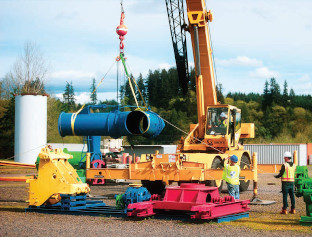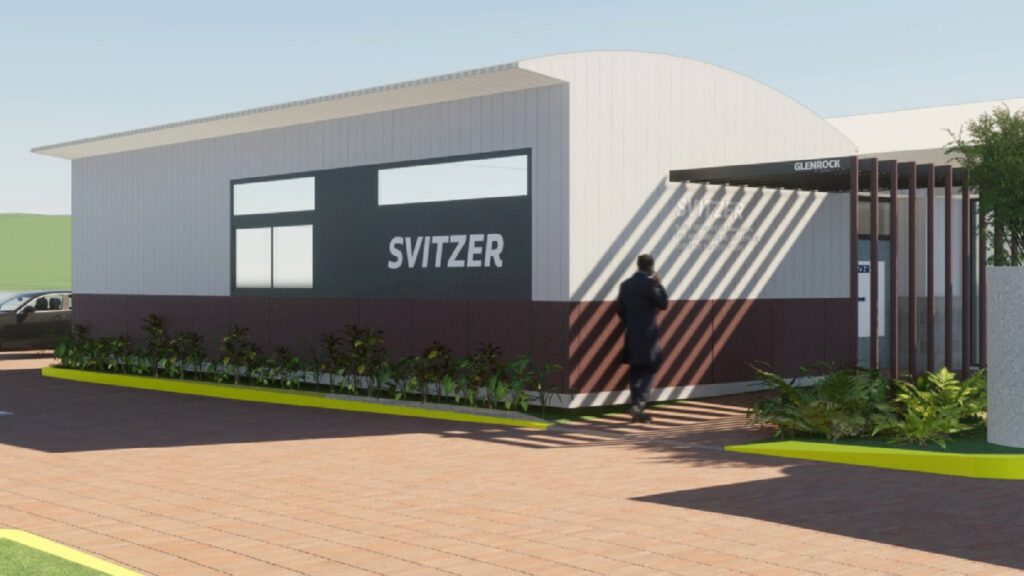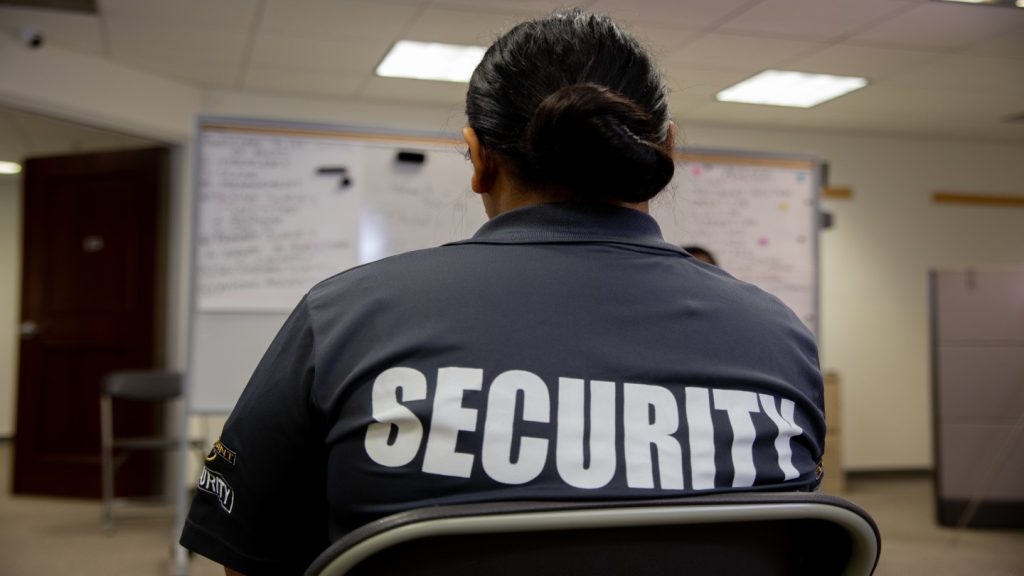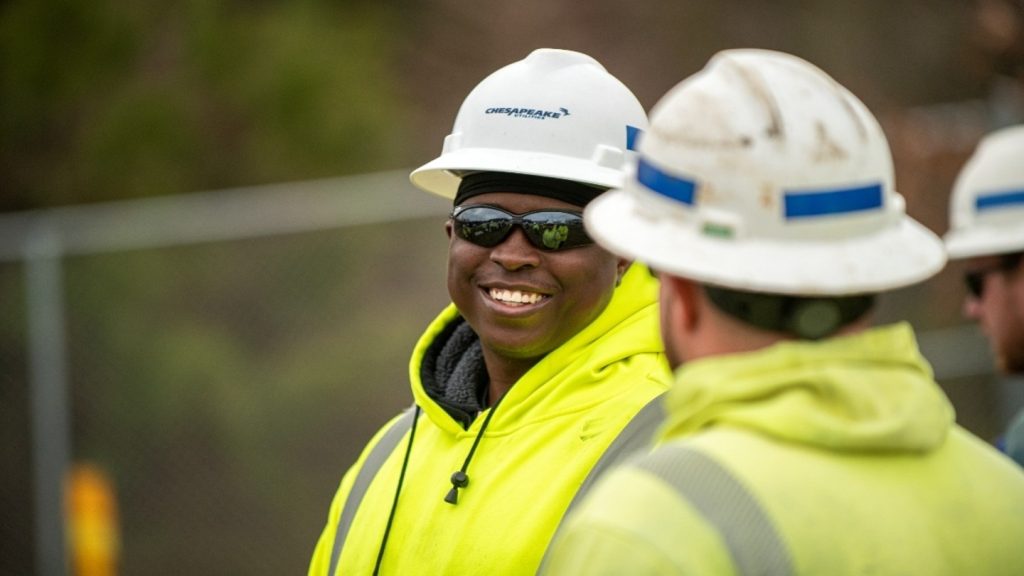
Brought to you by
Training comes in many guises. There are safety training courses; there is on-the job training; there is theoretical training in classrooms with whiteboards and hands-on training in workshops with actual cranes and hoists; and now there is virtual reality training using simulators. One focus of these courses, whatever the route, is safety, but other benefits come as well.
Competence is one; and with competence comes self-confidence in the worker in what he or she is doing. With that comes speed, and efficiency, and so savings in money and less abuse of the machine, less wear and tear, and fewer time-outs for maintenance and repair.
ITI is one of North America’s largest training organisations—Joseph Kuzar is technical director there.
“Those are all good reasons for training,” he says; but sitting through an indifferent training course, no matter how good its syllabus, might not achieve the planned aims. For any of the benefits to be realised the training has to get through to the student. Which requires, says Kuzar, an added ingredient: “The hallmark of any good training is passion,” he says. “The instructor has to be passionate about his subject.
“Adult learners very quickly judge whether what is being given is of any value to them. So that passion has got to get through. You have got to bring them in in the first ten or fifteen minutes to get that trust established.
How well do you really know your competitors?
Access the most comprehensive Company Profiles on the market, powered by GlobalData. Save hours of research. Gain competitive edge.

Thank you!
Your download email will arrive shortly
Not ready to buy yet? Download a free sample
We are confident about the unique quality of our Company Profiles. However, we want you to make the most beneficial decision for your business, so we offer a free sample that you can download by submitting the below form
By GlobalData“Adults learn very differently from the way we did when we were high-school or college students. Instructors and trainers can feel comfortable in a classroom but for many trainees that is just not their comfort zone. They find it a stressful place; it adds to their tension and interferes with understanding.” A change of method, or sometimes just a change of venue, can be enough to transform things: “I remember a Canadian student I was teaching in the classroom, who was getting really rattled.
I said ‘Just give me five more minutes here and I will show you the exact same thing outside.’ Outside, on real equipment, he measured distances with tape on the load, instead of me describing it and showing it on a board, and he got it straight away. Not only that, he got it so well that he was going around helping others.”
And even in the classroom different methods get different results. “Very little is learned by ‘lecture download’,” says Kuzar. “We don’t allow Powerpoint presentations for example. We are guiding people through the workshop, and a lecture from on high is very little help with that.”
Much training is mandatory, required by legal regulations. “Such ‘Check the Box’ training can be harder to deliver,” says Kuzar. “Trainees arrive and sit with their arms crossed, leaning back in their chairs, closing off to you. You can see them thinking ‘Oh, I am going to endure this.’”
An hour later (with good teaching) their whole body language has changed. “Guys are leaning forward, hands on the desk, taking notes and asking questions. It’s an amazing transformation to see.
“Clients who want checkbox training usually don’t end up doing their training with us,” he says. “But we have an amazing list of clients who want their staff to really know and be comfortable with what they are doing.”
In the US, legal requirements vary. “Most states go with the Federal requirements for certification. There are some whose requirements are more strict, but they are few and far between. Washington State is one that demands ‘accredited crane certification’. California is another. Metropolitan areas can also be different: New York City has stronger requirements than New York State; Cincinnati and Michigan are others with their own requirements.
“And within the federal requirements there are oddities. Lifting operatives in construction have to be ‘certified’; lifting operatives in industry need only be ‘qualified.’ The difference, as far as I can see, is that a person can be qualified to operate a host or crane by virtue of experience, or by his employer’s say-so. Certification is a process of imparting knowledge with a third party to ensure there is no bias in the testing. In certification, everyone has the same chance. Race, religion, how well your boss likes you are all irrelevant. It is a level playing field.”
Certification in the US is covered by regulation 1926.1427, which is the Department of Labour standard covering Cranes and Derricks in Construction. It says, among other things, that: “The employer must provide each operator-in-training with sufficient training, through a combination of formal and practical instruction, to ensure that [he or she] develops the necessary skills, knowledge, and ability to recognize and avert risk,” to operate equipment safely.
Certification must be by an “accredited crane operator testing organization,” (such as ITI), “and, when required, must be at no cost to employees.” Certifications are through written and practical tests and must determine, again among other things, that “the individual knows the information necessary for safe operation of the equipment the individual will operate; must have the ability to calculate load/capacity information; and have knowledge of procedures for preventing and responding to power line contact.”
Kuzar says: “Regulation 1926.1427 says in effect ‘This is what you need to cover on your course for certification of crane operators,’ but the Federal government does give some leeway to trainers.” And not all the regulations are as clear or as perfect as they could be: “The official definition of a ‘qualified rigger’ is ‘A rigger who meet the needs of a qualified rigger’!”
That may or may not be just slightly circular. Nevertheless, the same regulation states ‘that a qualified rigger must be used when hooking, unhooking, guiding and connecting a load’. “It would carry more punch, and mean exactly the same thing, if it said ‘All loads must be rigged by a qualified rigger’,” says Kuzar.
Technology Helps
The current public health situation, of course, does not allow for face-to-face tuition. In response, the company has launched webinar training. “We ran the first two sessions at the end of March [2020],” says Kuzar. “We had around eight students in each session, and the sessions went very well, with lots of good feedback from trainees and employers. The same passion is needed, but it is complicated for our instructors in that they normally rely on the body-language of the students and their facial expressions to judge if they are getting the point across. With webinars, they don’t get that. It is a little as though they are speaking into a black hole.
“But yesterday afternoon, at a Zoom conference for our fourteen training staff, our senior instructor Jim Cox came up with a point to help that. In training I challenge our staff to learn the names of all their students by the second break, which is usually the second hour. For the webinar Jim’s advice is to use each student’s name, at least once an hour, even though you cannot not see him. So it is ‘Hey, John, what you have got there is such-and-such…’. There is no better way to dignify someone than to use their name.”
ITI have an office in Canada and a partnership in Brazil and have begun to expand outside America. In February 2019 they opened an office in the UK. Christina Langham is its director. “We are still in the setting-up phase, exploring what is most needed,” she says. “We will be covering all types of lifting equipment, from industrial hoists to construction-site gear. Our focus at present is our virtual reality training units.
“A one-day intensive workshop faceto- face was planned for April, but the coronavirus of course has meant that that has had to be postponed; we hope to run it in the autumn.”
Efficiency and Safety
As she points out, an important factor in crane safety lies with the people who do not operate cranes at all. “I have been showing our VR simulator and hazard assessment programmes, and went onsite with the simulator recently to orient non-crane operators, to give them a feel for what it is like to operate a crane. The idea was to help them grasp what a crane operator can and cannot do. Things like clear lines of sight are important. We were able to show them that asking an operator to shift a load half a foot to the left is not necessarily a simple thing for him to do.
Safety is everyone round the crane, not only the operator; if a workman wanders into the path of a load, the consequences are bad no matter who is at fault. So we get people to sit in a virtual crane, to see it from the operator’s perspective, to see how hard it is to do small movements that from the ground look easy.”
Daniel Harding is commercial manager of Train-a-Lift, who have been delivering lift training since 1977.
“We started out with fork-lifts,” he says, “but when you are in a factory and there is a gantry crane and they ask ‘Can you train us on this?’ it rather followed on, and we built our expertise from there. Now overhead lifting is a big part of our business and we deliver crane training for the biggest names in the industry. Most of the training we do is for the gantry crane, or overhead crane; the vast majority of workplace cranes fit into this bracket. We can train on other cranes too of course: one of our mantras is ‘We can train on anything that lifts!’ We train on all kinds of equipment, from the smallest jib crane at small engineering companies up to nuclear sites, defence sites, secure sites—it’s a very interesting industry. We work also with some very large crane manufacturers to support their training.
“All crane training is conducted at our clients’ sites. This is deliberate for one key reason; it is best to conduct training on the actual equipment the operator(s) will be using. Our typical customer is a business who have invested in a crane and the staff to operate it and they want to ensure safety.
“When it comes to refreshers and the regularity of repeating training, the Health and Safety Executive (HSE) mentions a time frame of 3–5 years. In our experience most businesses and their insurers insist on a 3-year refresher period, especially on the cranes where the loads are typically heavy and valuable.
“We are registered with two accrediting bodies, ITSSAR and AITT, which both belong to the accrediting bodies association. They set the course length and the testing standards but not the content or how the trainer delivers the training. This is where experience comes in, and choosing a training provider that is both accredited but also has pedigree is really important.
High quality training leads to a reduced risk of accidents, which is only ever a good thing.
“A good quality crane course will cover a whole range of topics, theory and practical. These topics would include the legalities around training, making it clear why training is important. Then it would cover common terminology, slinging and the rating/ derating factors followed by a theory test.
After this we look to develop their practical skills and will look at pre-operational checks, selecting the right equipment, control familiarisation, controlling the load and turning a load. There is a minimum requirement in the syllabus, but we like to go further of course and do as much extra as we can, especially if the customer has a very specific use of the crane, we will try to cover that as much as we can in the practical.
“If you look at this from the business’ perspective, the company sends us a novice operator, they get back a certificated, competent and confident operator. But the certificate is only the first part of it. After that there is on-thejob training conducted at their workplace to help the operator understand any job specific aspects of their work. This is typically undertaken by the employer but a good training company will be available to support with if needed.
“The prompt for training may sometimes be may be legal obligation but going through the motions is not what any good training is about. The gain in efficiency— operators knowing what they are doing and able to do it quickly and confidently—is massive, as is the lessening of risk to safety.
“Overall, training isn’t a box to be ticked, it is an essential part of a safe working environment, one that benefits the employer, the employees and the equipment. Without effective training you risk damaging goods, damaging the machines but most severely there is risk to life and training—good quality training— must be taken very seriously.”
LEEA, the Lifting Equipment Engineers Association, train people how to inspect overhead cranes during regular maintenance checks, to help prevent accidents, and to comply with civil liability requirements should an accident happen. Craig Morelli is their training manager.
“Cranes have to be regularly inspected. But if you are on a site using a crane, the statutory inspection may have been done ten or eleven months earlier. It may have deteriorated since then. It must be safe for that particular lift, so you need to inspect it. Anyone who is responsible for using a load-lifter needs user-level inspection training. The inspection will not be as in-depth as the statutory one, and does not need documentation, but it does need to be done. So you can run your machine unloaded at the start of each shift to ensure that the end-limiters are working properly and that speeds are normal: too fast or too slow might mean an electrical or a braking fault.”
There must be no obvious visible damage to the machine, no corrosion, wear or cracks. “Places to start looking are the maximum stress points, where the structure is most vulnerable. We hear occasional complaints that some training courses are too in-depth with talk on identifying such points. But it is a vitally important skill, to look in the right places, not to waste your time looking for faults in the wrong places. If you can identify where the defects are likely to appear that is a big plus.
“Analysis shows which parts of the equipment are most at risk, but class nothing as ‘not being vital’. Even a pin in a shackle is essential. Vibration can loosen it, and the load can drop. You can inspect any part.
“So you look for the simple fundamental test of the machine. You can run it unloaded at the start of each shift. Ask yourself ‘Does the crane work as it should? Do the limit-stops cut out at the right places, does it move too fast or too slowly?’ Wrong speeds can indicate a problem with electronics or braking systems. You work through in a logical sequence so as not to miss anything: all the structure, and all the supporting structure that it runs on. At any point that you are unsure of, speak to a specialist; a non-destructive tester can come in and determine if the problem is serious.
“Many companies now are training in-depth, not just to pass an exam or to get the qualification or the bit of paper. A machine out of service is a big thing so they want their operators to know what to do if they see a crack.
“Most crane engineers now are ‘workat- height’ qualified, because of safety. We teach awareness of that, and of safety techniques like ‘lock out-tag out’: when you are working on a crane you isolate the electrical system and put your own padlock on it. The crane engineer is the only person with the key to that padlock, so no-one can start using it until he is clear.
“Any crane can be a danger, whether it is 2t or 100t capacity. You tend to find that the higher the capacity, the more careful people are: most incidents happen with small cranes. A little stand hoist in a garage lifting a 600kg car engine can be just as dangerous as something bigger.”
And, as with ITI, remote learning is important, especially now. LEEA’s online training is well established and award winning. “Since 2015 we have had the LEEA Academy in place, for e-learning. As part of the package, questions can be asked of a tutor who will respond within a day. The system is designed to be attractive to people who wish to learn at their own pace as well as those who are geographically distant.
“We spent a lot of time developing e-learning. It is a great thing to be doing at this time when face-to-face training isn’t available. We are also trialling web-based learning, with face-to-face webinars. We will have a trainer teaching a class which may be made up of students in a variety of locations. They can be anywhere in the world as long as they have a reasonable web connection. We launched it at the end of March. In the current situation, we believe this new approach offers the best possible solution for learners who prefer real time training but in a socially distanced environment. The only problem is with end-point assessment of the candidates.
We plan when the crisis is over to put on assessment days to ensure that the learning has been successful.”
One day life will return to something approaching normal. Meanwhile training organisations are keeping calm and carrying successfully on.
Training in Vietnam
An LEEA-approved centre in Vietnam is JCD Training, owned and run by Craig Douglas. Douglas began by supplying off-shore training out of Aberdeen, for the oil and gas industry. “Contacts in the sector led to requests to train overseas, in the Middle East but also in Malaysia, Singapore and South-East Asia,” he says. “We lost our venue in Singapore three years ago, whereupon Vietnam-based providers PVD contacted me; we now have a joint venture based in Vung Tau, 2 hours south of Saigon. We have a training centre onshore, and we use a PVD-owned vessel also.
“We work to standards that are globally applicable. The UK has BS 7121, which is the code of practice for the safe use of cranes; the US has API RP2D, the American Petroleum Institute’s Recommended practice for off-shore cranes. We work to both; and with those two qualifications an operator can work anywhere in the world.
“Our training sessions have five or six in a class, taught by myself and my assistant Truong Houng. Demand, (pre-Covid), has been increasing, ruled of course by the price of oil. Every crane or hoist operator needs a valid certificate or no company will employ him. And a company is not going to put an idiot in charge of their machinery, they want him to be competent. We train in overhead cranes, gantry cranes, offshore cranes, you name it. The objectives are to be safe; to look after your machine and to have confidence in what you are doing.”






